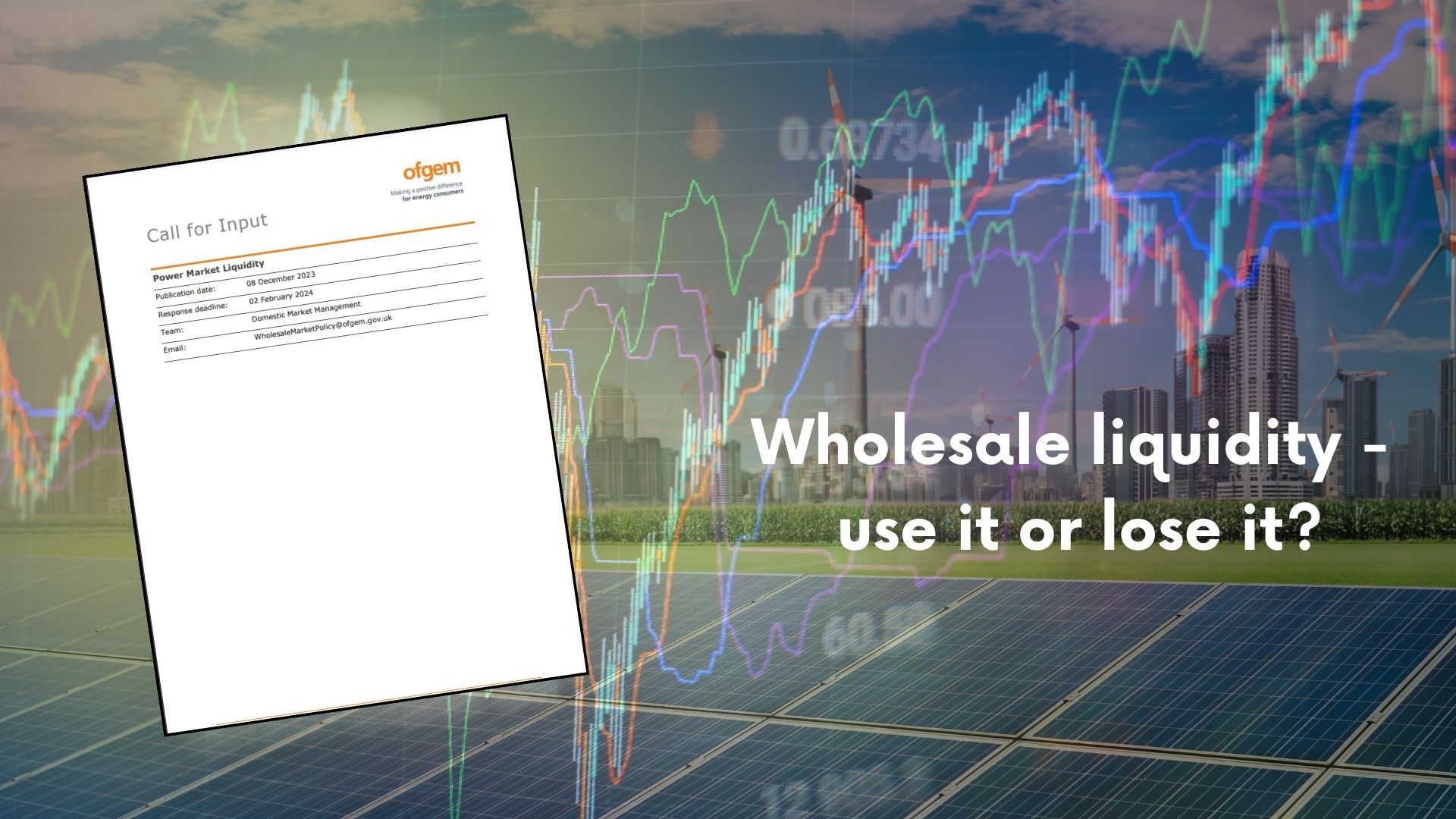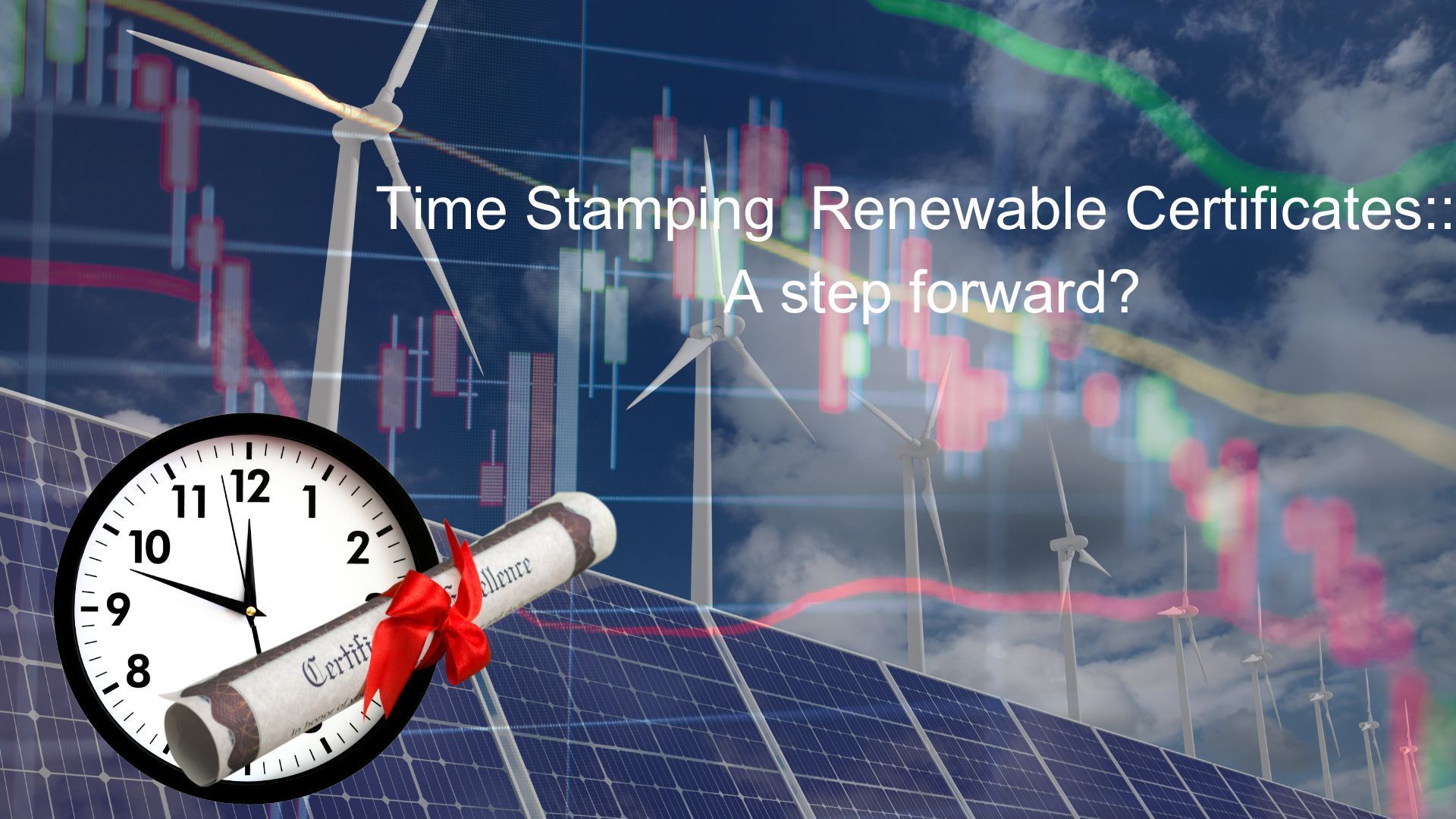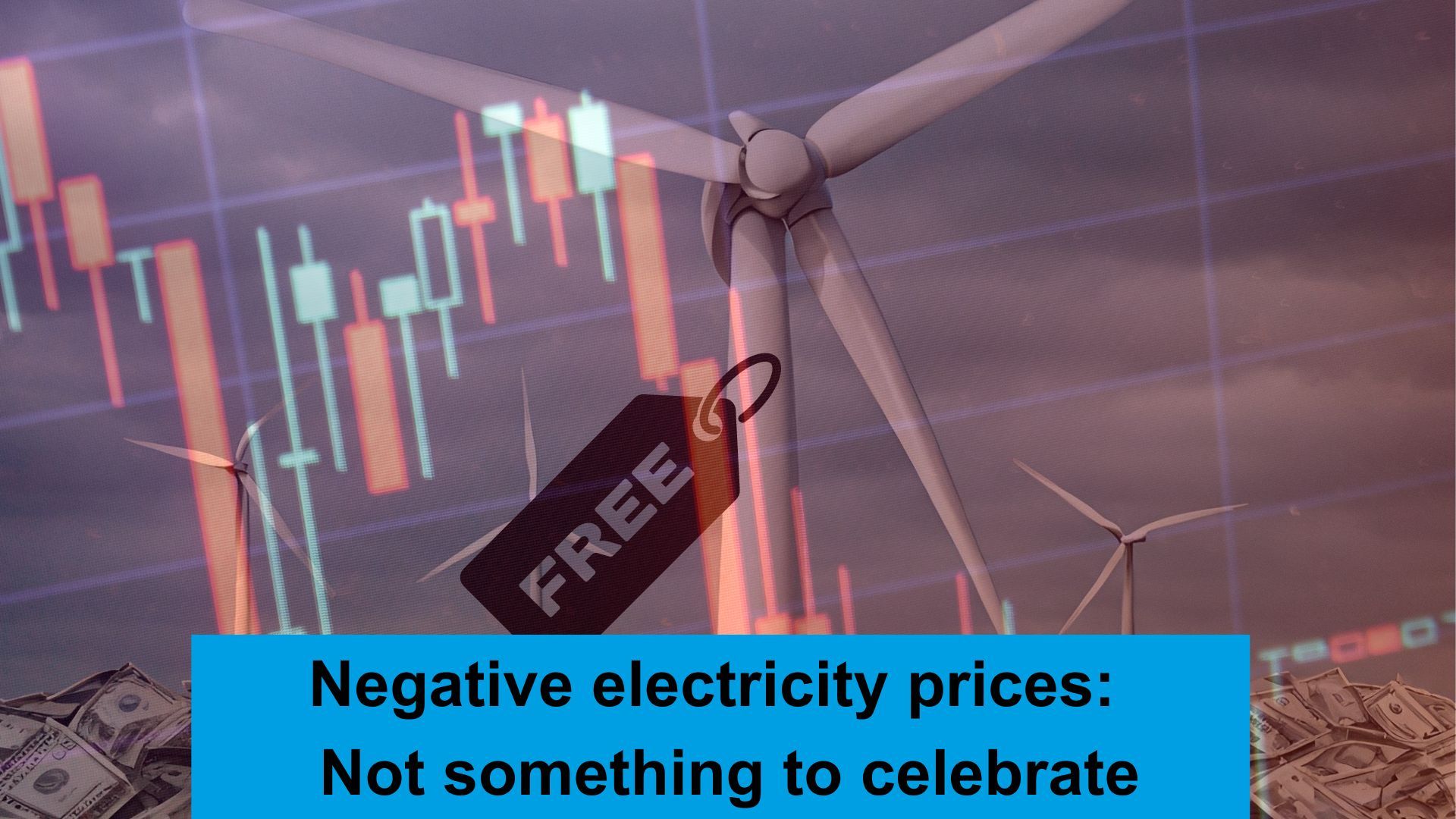Is there enough liquidity, and if not who should provide it?

According to Ofgem’s definition, liquidity is ‘…the ability to buy or sell a product without causing a major change in its price and incurring significant transaction costs’. Having worked at large organisations, it’s a similar definition to I’ve seen used elsewhere.
But is this realistic?
𝑨 𝒃𝒊𝒕 𝒍𝒊𝒌𝒆 𝒆𝒙𝒑𝒆𝒄𝒕𝒊𝒏𝒈 𝒕𝒐𝒘𝒏 𝒄𝒆𝒏𝒕𝒓𝒆 𝒔𝒉𝒐𝒑𝒔 𝒕𝒐 𝒃𝒆 𝒕𝒉𝒆𝒓𝒆 𝒘𝒉𝒊𝒍𝒆 𝒔𝒉𝒐𝒑𝒑𝒊𝒏𝒈 𝒐𝒏𝒍𝒊𝒏𝒆 𝒕𝒉𝒆 𝒎𝒂𝒋𝒐𝒓𝒊𝒕𝒚 𝒐𝒇 𝒕𝒉𝒆 𝒕𝒊𝒎𝒆.
Wholesale market liquidity does not live in a vacuum, so if you expect to be able to access 5 year prices on a whim, once every few years (and others behave in the same way) don’t be surprised if its either:
Not possible or Very expensive
In its current consultation, Ofgem is seeking view from companies to understand if any market interventions are needed to provide liquidity, and if there is sufficient liquidity to meet the needs of market participants.
It would be interesting to see a definition of ‘market participant’, but there isn’t one that I can see.
In reality, the actual wholesale market participants are those that make and trade the prices day-in day-out. They are exposed to having to manage open positions, and deal with market impacts in a way that occasional users do not. I imagine Ofgem considers participants to be secondary users, rather than those in the market directly.
𝐖𝐡𝐚𝐭 𝐢𝐬 𝐡𝐚𝐩𝐩𝐞𝐧𝐢𝐧𝐠:
Long term liquidity is falling.
According to Ofgem’s analysis total market churn (total traded volume / physical supply) has dropped from around 4 in 2017 to sub 3 more recently.
However, going back further, other Ofgem reporting shows this isn’t really an anomaly. At the start of the NETA trading regime trading spiked with 2002 seeing churn of 9 and then averaged between 3 and 4 until the mid 2010’s.
The 2002 data is likely to be heavily influenced by the American trading houses (Enron etc) that brought huge liquidity to the European energy markets prior to their subsequent corporate failures.
That suggests that the natural churn for the GB market is somewhere between 3 and 4; although the distribution between produce durations has shifted,
𝐒𝐨 𝐰𝐡𝐚𝐭?
The impact of liquidity does matter, particularly to those taking on contracts with flexible pricing mechanisms.
For generators and consumers looking to access wholesale prices for their products it is important to be able to establish a market price to manage their risks.
𝑩𝒖𝒕, 𝒔𝒉𝒐𝒖𝒍𝒅 𝒆𝒗𝒆𝒓𝒚𝒃𝒐𝒅𝒚 𝒆𝒙𝒑𝒆𝒄𝒕 𝒕𝒐 𝒃𝒆 𝒂𝒃𝒍𝒆 𝒕𝒐 𝒂𝒄𝒄𝒆𝒔𝒔 𝒑𝒓𝒊𝒄𝒆𝒔 𝒚𝒆𝒂𝒓𝒔 𝒊𝒏𝒕𝒐 𝒕𝒉𝒆 𝒇𝒖𝒕𝒖𝒓𝒆 𝒂𝒕 𝒂𝒏𝒚 𝒑𝒐𝒊𝒏𝒕 𝒊𝒏 𝒕𝒊𝒎𝒆, 𝒂𝒏𝒅 𝒊𝒇 𝒔𝒐 𝒘𝒉𝒐 𝒕𝒂𝒌𝒆𝒔 𝒓𝒆𝒔𝒑𝒐𝒏𝒔𝒊𝒃𝒊𝒍𝒊𝒕𝒚 𝒇𝒐𝒓 𝒕𝒉𝒊𝒔?
Historically, Ofgem placed that responsibility on the Big 6 large vertically integrated companies, which no longer exist in anything like the format of previous times.
Liquidity has been most reduced in more long-term products. This likely has many causes – collateral to underwrite transactions, shorter price fixing for consumers and changing subsidy schemes for renewables.
𝐎𝐟𝐠𝐞𝐦 𝐝𝐨𝐞𝐬 𝐧𝐨𝐭 𝐢𝐧𝐜𝐥𝐮𝐝𝐞 𝐧𝐮𝐦𝐛𝐞𝐫𝐬 𝐟𝐫𝐨𝐦 𝐚𝐜𝐭𝐢𝐯𝐞 𝐏𝐏𝐀 𝐦𝐚𝐫𝐤𝐞𝐭𝐬 which remove the need for traditional longer term trading for some contracts.
𝐄𝐥𝐞𝐜𝐭𝐫𝐢𝐜𝐭𝐲 𝐭𝐫𝐚𝐝𝐢𝐧𝐠 𝐢𝐧 𝐡𝐢𝐬𝐭𝐨𝐫𝐲
When brokered traded markets began through the Electricity Forward Agreement (EFA) as a mechanism to allow suppliers and generators to balance their positions in the 1990’s the funding for this came from suppliers – who all contributed to a broker coming into the market. There was no market making obligation, but volumes grew as the need (and desire) to trade grew, making the market self-sufficient.
As the cost of long-term trading has increased and the need to trade amongst market participants has changed with the changing physical dynamics, who now needs the market most?
Physical market participants can go and seek the market. Through direct trading relationships it can be possible to find the other side of the market for a transaction. That fails on Ofgem’s definition of liquidity, but meets the reality of markets – if there isn’t a price go and pay somebody to take your risks.
Those without direct access to markets – consumers, small generators, small suppliers rely on prices made to them through third party companies that are in the market. Theses companies are tied to a definition or market price within a contract, and cannot go elsewhere. However, it is a choice to take these contracts in the first place.
𝐖𝐡𝐚𝐭 𝐝𝐨𝐞𝐬 𝐭𝐡𝐢𝐬 𝐦𝐞𝐚𝐧?
If you have a market access contract that offers 5 years of trading capability – that doesn’t mean prices will always be available, or that you will like the number quoted. Plan accordingly.
Liquidity in very short term markets remains unchanged. This is great for those looking to only manage price risks in the short term, either generator or customer; and traders can make as much with high volatility as they could with long term contracts.
𝐍𝐞𝐱𝐭 𝐬𝐭𝐞𝐩𝐬 𝐍𝐞𝐱𝐭 𝐬𝐭𝐞𝐩𝐬
Ofgem may seek to intervene in the market depending on the outcome of the consultation.
The most sensible solution would probably be to pay a party to become a market maker, as its hard to argue that the remnants of the big 6 should take any obligation.
The question will then be who pays if an intervention is made. The last intervention was effectively financed directly from obligated companies balance sheets. Any new obligation may best be financed by a fee on all generation and supply volumes, but time will tell.
𝑴𝒂𝒓𝒌𝒆𝒕 𝒍𝒊𝒒𝒖𝒊𝒅𝒊𝒕𝒚 𝒅𝒐𝒆𝒔 𝒏𝒐𝒕 𝒍𝒊𝒗𝒆 𝒊𝒏 𝒂 𝒗𝒂𝒄𝒖𝒖𝒎, 𝒔𝒐 𝒑𝒍𝒂𝒏𝒏𝒊𝒏𝒈 𝒐𝒏 𝒕𝒉𝒆 𝒃𝒂𝒔𝒊𝒔 𝒐𝒇 𝒖𝒏𝒇𝒆𝒕𝒕𝒆𝒓𝒆𝒅 𝒎𝒂𝒓𝒌𝒆𝒕 𝒂𝒄𝒄𝒆𝒔𝒔 𝒎𝒂𝒚 𝒏𝒐𝒕 𝒃𝒆 𝒂𝒅𝒆𝒒𝒖𝒂𝒕𝒆 𝒊𝒏 𝒕𝒉𝒆 𝒎𝒊𝒅 𝒕𝒐 𝒍𝒐𝒏𝒈 𝒕𝒆𝒓𝒎.
Share this on social media










